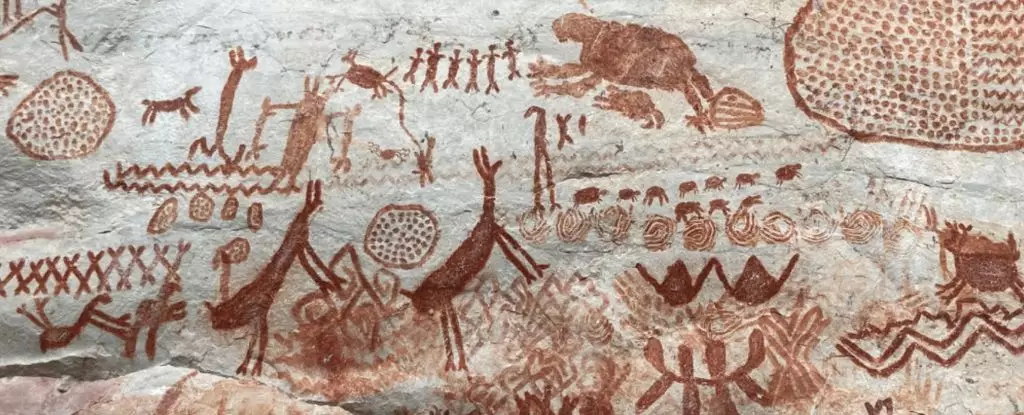The extraordinary rock art found in Serranía De La Lindosa, Colombia, serves as a compelling testament to the rich cultural tapestry woven by the Indigenous peoples of the Amazon. This ancient artwork transcends mere visual representation; it encapsulates a profound connection to the spiritual realm, revealing beliefs and practices that have persisted for millennia. Recently, researchers from Colombia and the UK have embarked on a monumental effort to document these images, shining a light on the intricate relationship between the sacred world and the natural environment depicted in the art.
The exploration of rock art in Serranía De La Lindosa has faced numerous challenges, including decades of political instability and the remote geography of the area. However, with the guidance of Indigenous elders and ritual specialists, researchers have uncovered tens of thousands of images across six distinct sites. Jamie Hampson, an archaeologist at the University of Exeter, highlights the fortunate alignment of Indigenous narratives and the rock art, suggesting communal understanding between contemporary observations and historical depictions.
These motifs, many of which date back over 11,000 years, depict a vibrant ecosystem comprised of human figures, animals, plants, and abstract shapes. Yet, these artworks are much more than mere representations of the observed world. Instead, they act as conduits between the physical environment and the spiritual beliefs that underpin Indigenous cosmologies.
The rock art demonstrates not only a snapshot of the natural landscape but also an active engagement with the spiritual realm. The Indigenous artists imbued the paintings with layers of meaning, depicting transformations that transcend the physical: people morphing into animals and hybrids of humans and plants. Ismael Sierra, a Tukano speaker and elder, explains that the painted figures are not just physical manifestations; they represent beings that exist in the spiritual dimension, thereby bridging the gap between the earthly and the ethereal.
Hampson and his colleagues elucidate that many Amazonian cultures believe in a complex interplay between humanity and forest spirits, which oversee the balance of wildlife. The creation of this art reflects ritualistic negotiations with these spirits, especially during hunting. The use of ochre pigment to render animals serves as a symbolic act of invoking these beings and requesting their favor—be it for a successful hunt, fertility, or other needs. This art is a vital aspect of Indigenous life, embodying a continuous dialogue with nature and spirit.
The Interconnection of Beings
Furthering the understanding of these art forms is the idea that animals, particularly the jaguar, act as mediators between different realms. The jaguar is seen as an avatar for shamans and carries significant cultural weight, bridging the divisions of life and death as well as the human and spiritual worlds. This notion of interconnectedness speaks volumes about how Indigenous peoples view their place within the larger ecological and spiritual tapestry of existence.
Hampson emphasizes the importance of collaborating with Indigenous elders, asserting that such partnerships allow for authentic interpretations of the art’s significance. This collaboration leads to a deeper understanding that these paintings are sacred artifacts created in an animistic framework, inseparable from the land and its lore.
The value of documenting Indigenous rock art extends far beyond academic interest; it plays a crucial role in preserving cultural heritage. The disconnection of Indigenous art from its creators risks erasing historical narratives that have shaped community identities. Elders like Ismael Sierra express profound concern about the future of these paintings amidst human conflicts displacing them from their ancestral lands. He fears that without protective stewardship, these sacred sites may fade from memory, losing their cultural significance.
Understanding and preserving the rich history encapsulated in Serranía De La Lindosa’s rock art is paramount; it honors the deep connections that Indigenous peoples maintain with their ancestors, the spiritual world, and the natural environment. As research continues, a greater appreciation for these ancient expressions of belief can support the resilience and heritage of Indigenous cultures in Colombia and beyond, ensuring that these narratives endure for future generations.

Leave a Reply